There are few metaphors more persistent in gaming than the massively multiplayer role-playing game as an amusement park. World of Warcraft sets players loose in a playground not dissimilar to Disney World. You're let loose in zones with varying themes, and you mark the checkboxes of all of the fun things you're supposed to do: slay Arthas, ride the Tower of Terror, collect six rabbit's feet, get your commemorative photo, and so forth. Disney World in particular always felt like the logical extension of that amusement park analogy. You wait your turn to take part in your own hyper-condensed version of a bigger story.
But what happens when that ride breaks down? What happens when you're stuck in your log and you see Br'er Bear pop out of his hiding hole for the fourth time on Splash Mountain? What happens when the Rock 'n' Rollercoaster breaks down and you can see the party in the car ahead of you? The magic is gone, the illusion is shattered. Without just enough visual distractions to take your mind off of it, you're reminded that you paid exorbitant gobs of money to wait in a line all day. With The Elder Scrolls Online: Tamriel Unlimited, ZeniMax Online Studios has crafted a virtual playground of great scale and beauty, but you're always one second away from seeing the skeleton beneath the game's shimmering fantasy facade.
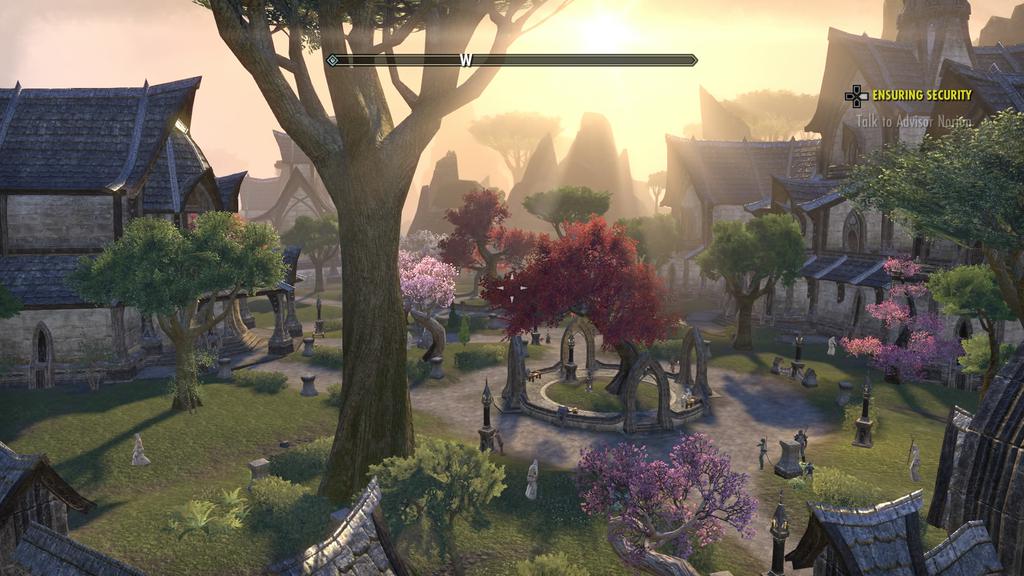
The game was originally released on PC last year to mixed responses. Of course, a lot can change in MMOGs over the course of a year, and while ZeniMax Online Studios hasn’t branded the console release as a Final Fantasy XIV: A Realm Reborn-style re-invention of the game, the steady stream of major patches represent somewhat of a course correction. And while many improvements have been made to The Elder Scrolls Online, they only serve to remind us of how inconsistent the game's base structure is.
The Elder Scrolls Online is set 1000 years before Skyrim. I won't delve too much into the plot (the game is committed to telling a sweeping fantasy tale); suffice it to say, you play as the Vestige, a soulless adventurer killed by the servants of Daedric prince Molag Bal--think Snow Lucifer--who has been given a second chance at life. You scour the continent of Tamriel fighting demonic invasions and the political upheaval of the continent's three major military alliances. Your time is spent undertaking three major activities: questing, fighting, and exploring. On each of these core fronts, The Elder Scrolls Online is, at best, a glorious and inviting facade of the fantastic game it might have been, and at worst, a tedious tour of the relics of MMOG and RPG design that we've moved past in the last ten years.
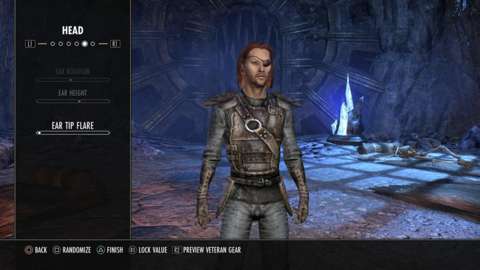
That inviting facade is key to the whole experience, and what kept my several score hours with the game from being actively miserable. The Elder Scrolls Online does away with quests in which you're asked to perform an endless chain of "kill X enemies" or "collect X items" quests. The Elder Scrolls Online's quests are inviting, often extending further and deeper just when you think a quest has reached its end. Right out of the gate, my Bosmer Nightblade in the Elven (and Khajiti) Aldmerri Dominion was thwarting royal assassinations by radical hate groups, building alliances with island nations, and uncovering Daedric plots to infiltrate the government. The actual actions involved are standard RPG fare ("beat Boss A," "talk to Characters B and C," "work your way through Dungeon D to find MacGuffin E"), but I can remember the quests in The Elder Scrolls Online, which I simply can't in other MMOGs.
Unfortunately, the effort the developer puts into making these quests memorable, large-scale undertakings begins to work against itself at every turn. The Elder Scrolls Online has the personality and expressiveness of the Pirates of the Caribbean ride at Disney World (to return to my original metaphor). It's a fun distraction at first, but the second you pay any real attention, you notice that characters have the emotional range of a lower-tier soap opera and that every line of dialogue is pure exposition devoid of spark. There is enough voice acting to make Star Wars: The Old Republic jealous, but the stale dialogue invites you to zone out every time a character begins to speak. So while I can remember each of my thrilling adventures in Tamriel because the active engagement payoff is so high, I remember snatches of character names here and there but too few details of my ultimate purpose. Even characters who make promising introductions fall flat when the game keeps insisting on telling you about them instead of showing you who they are.
I could move past that. That's nearly Bethesda's whole metier at this point. It was much harder to move past The Elder Scrolls Online's inability to reconcile its single-player roots with its newfound MMOG playground.
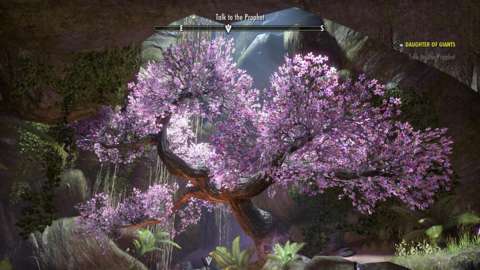
It's 2015 (even if the base game was released in 2014), and MMOGs have discovered that phasing is an effective way to deliver the immersion of single-player- and/or small-group-centric storytelling without sacrificing the larger social experience. The Elder Scrolls Online uses phasing. It uses phasing a lot. If you clear a village of marauding pirates or reverse the curse that has all the forest's woodland creatures attacking you, the problem is fixed forever. You can traverse these portions of the map in peace--although that is often less "phasing" than "all these enemies are now corpses on your visual of the map" or “all enemies’ aggro meters have been set to neutral.” It is hilarious to see wolves that were just docile with you attacking a new player who comes wandering into the area as you're leaving. The more glaring problems arrive when you see multiple versions of the same NPC wandering around (or one alive version and another dead one lying by his feet) or you're fighting enemies that only you are meant to engage for very specific plot reasons but dozens of other players are swarming around you. That suspension of disbelief is part of the genre, but the game goes so far out of its way to make you feel like the star of the show that dealing with other "stars" constantly draws you out of the experience.
In combat, The Elder Scrolls Online falls into the same rut. On paper, a traditional The Elder Scrolls combat system in an MMOG seems like the perfect antidote to the stale "memorize your hotkey ability rotation" nature of MMOG combat. Unfortunately, that's just what this game becomes, and when it's experienced from the first-person perspective (a mode I stuck to for the game's undeniable strong suit: exploration), attacks have little impact. You can fill an enemy full of arrows, but unless the stated effect of that attack is to physically move the enemy, you'll barely be able to tell whether you hit them without seeing their health bar drain. Combat animations have improved dramatically since launch, but combat still boils down to draining the health of one cluster of damage-sponge enemies after another with little thought or tactics needed outside of larger boss fights. And God forbid you experiment too much with the game's open-ended skill system because, early on, failing to stick to a single, solid build will make your character utterly ill-equipped for the most challenging combat encounters.
The good news about combat is that the The Elder Scrolls Online's transition to consoles should finally lay to rest the tired notion that MMOGs can only work on PC. Because the game limits your ability rotation to only a handful of active powers at once, using a controller is a painless process, and a first-person, open-world experience like this one translates nicely to the range of motion and view of analog sticks. Wandering Tamriel and fighting enemies with a controller in hand is a natural process, presuming The Elder Scrolls Online isn't getting in its own way in other respects.
If you stripped away the sluggish combat and hollow questing, you’d be left with the most gorgeous fantasy hiking simulator this side of The Witcher 3: Wild Hunt.
If you stripped away the sluggish combat and hollow questing, you’d be left with the most gorgeous fantasy hiking simulator this side of The Witcher 3: Wild Hunt. Whether you investigate the jungle Khajiti ruins of the island of Khenarthi's Roost, the vaguely Aegean coasts of Auridon, or the swampy, great forest of the Grahtwood, wandering across Tamriel is a transportive experience. The Elder Scrolls Online embraces a vibrant, warm color palette that is in stark contrast to the muddy browns and muted greens that make up so much of fantasy gaming today, and the various little details--the way in which each town's torch sconces are centered around different themes, the intricate lattice work in the art of the tree homes in Grahtwood, the room of a deranged Misery-esque murderer in the forest set up as a skeletal performance show--create a world in which you constantly say to yourself, "I have to see more."
But, even in the game's greatest triumph, the half-cooked shell makes an appearance. Interiors are repeated ad nauseum. If you've been in one large manor estate, you've been in them all. Your Ayleid ruins are the same corridor, antechamber, looping corridor, antechamber, looping to entrance corridor design. Watch towers are all one room and a viewing area. For a game that makes such great effort to create an external world full of endless wonder and a never-ending supply of things to do (though there's a good chance you'll have to enter player-versus-player regions to level properly because of the scarcity of XP rewards), entering dungeons, homes, and castles is a consistently tepid experience.
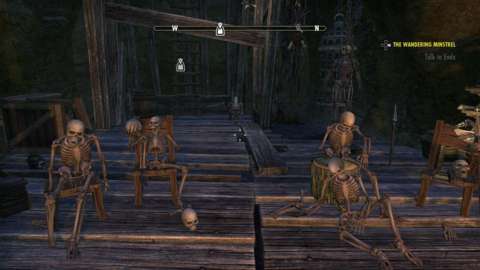
Speaking of PvP, The Elder Scrolls Online's approach is one area in which the game nearly gets things completely right. Utilizing a siege system similar to the one in Dark Age of Camelot--whose former devs make up much of the development team--the PvP focuses on interfactional warfare on the enormous map of Cyrodiil. How big is this map? This is the entirety of Cyrodiil--not individual regions; it spans the overworld space of all of The Elder Scrolls IV: Oblivion. If you want to capture the lonely adventure of a single-player experience, pick a direction on the map and ride off into the distance. You likely won't see other players for long stretches at a time. Cyrodiil offers PvE content in addition to PvP, but there's not enough of it to justify the map's enormous size, which becomes PvP's fatal downfall.
If you haven't purchased your mount yet, getting anywhere on the PvP map takes ages (and mounts don't greatly reduce the tedium of travel, besides). Fast travel locations are limited to the keeps your faction controls, and if you have an objective on the other end of the map, you'd better hope you have a good thirty minutes or so to ride in one direction until you reach it. And if five minutes before you reach your destination, you stumble across a higher-level player who then murders you--because this is war after all--you get to make that long ride all over again. Does it add tension to the PvP experience? Absolutely. But when you often have to return to that portion of the game just to properly level up, it becomes a hair-pulling time-sink.
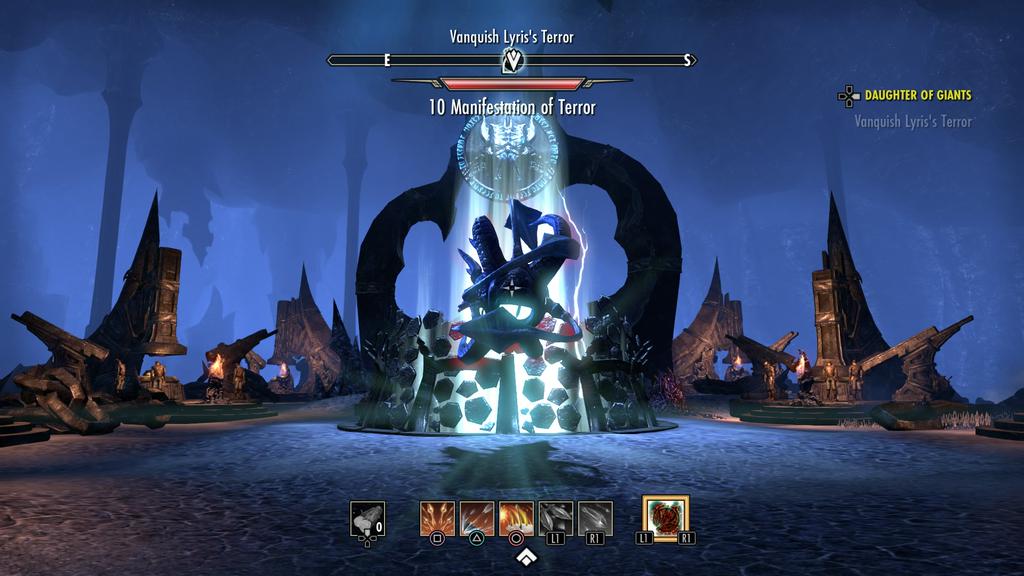
Maybe I'm a masochist, but I suspect I'll continue to return to The Elder Scrolls Online in the months ahead. Without a monthly subscription, my inner-Magellan is willing to weather the troubles just to see more of Tamriel. At no point have I thought to myself, "Alright, I've seen enough of this world." If exploration doesn't speak to you at some primal level, The Elder Scrolls Online is an easy pass (Final Fantasy XIV, WoW, and Guild Wars 2 are all much better uses of your money), but, to paraphrase a certain Jack Twist, Tamriel, I wish I knew how to quit you.